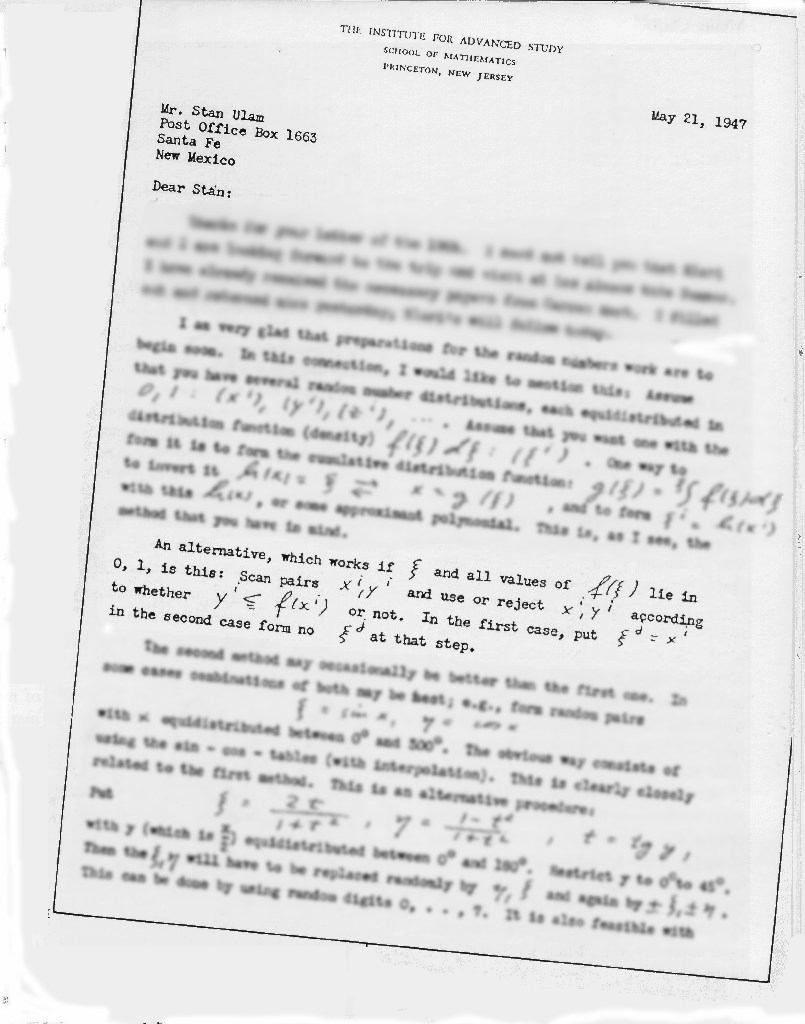


Next: 3.2.5 Multivariate Gaussian Distribution
Up: 3.2 Other Distributions
Previous: 3.2.3 Generalized Transformation Method:
3.2.4 Rejection Method
A classic: created by John von Neumann, applicable to almost any
 .
.
Here is the original formulation:

And this is how we read it today:
![\fbox{\begin{minipage}{600pt}
{\bf Rejection method:}
\\ [12pt]
Let $[a,b]$\ be...
...xt random number,
otherwise return to step 1.}
\end{enumerate}\end{minipage}
}](img559.png)
The method is simple and fast, but it becomes inefficient whenever the
area of the rectangle
![$[a,b]\otimes [0,p_{m}]$](img561.png) is large compared to the area below the graph
of
is large compared to the area below the graph
of  . Otherwise, the ``Improved Rejection Method'' may be
applicable:
. Otherwise, the ``Improved Rejection Method'' may be
applicable:

![\fbox{\begin{minipage}{600pt}
{\bf Improved rejection method:}\\ [12pt]
Let $f(...
...the next random number,
else return to Step 1.}
\end{enumerate}\end{minipage}
}](img562.png)
Franz J. Vesely Oct 2005
See also: "Computational Physics - An Introduction," Kluwer-Plenum 2001
![\begin{figure}\includegraphics[height=180pt]{figures/f3rej2.ps}
\end{figure}](img560.png)

![\fbox{\begin{minipage}{600pt}
{\bf Rejection method:}
\\ [12pt]
Let $[a,b]$\ be...
...xt random number,
otherwise return to step 1.}
\end{enumerate}\end{minipage}
}](img559.png)
![\begin{figure}\includegraphics[height=180pt]{figures/f3rej2.ps}
\end{figure}](img560.png)
![\fbox{\begin{minipage}{600pt}
{\bf Improved rejection method:}\\ [12pt]
Let $f(...
...the next random number,
else return to Step 1.}
\end{enumerate}\end{minipage}
}](img562.png)